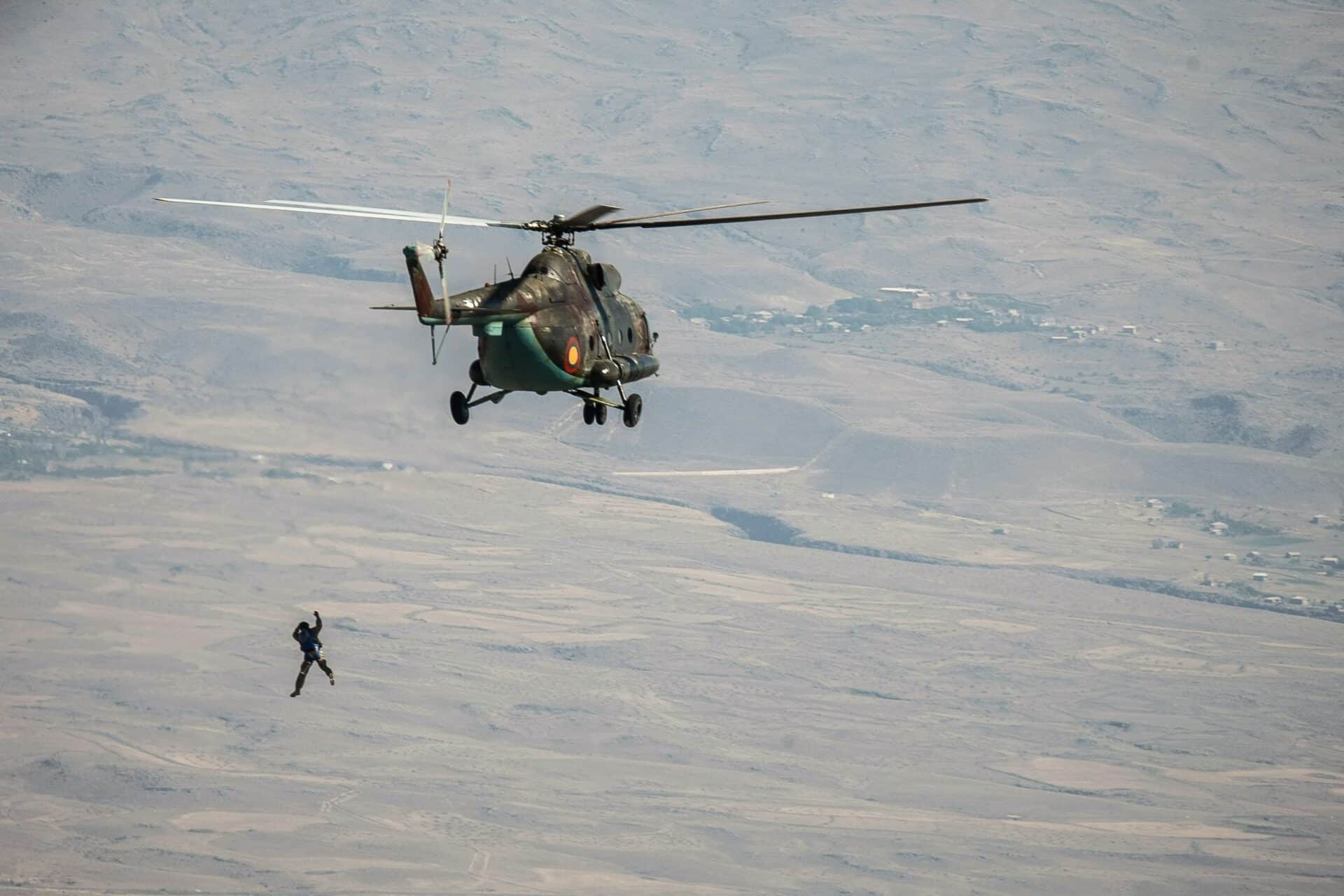Paratroopers undergo unique challenges and experiences that set them apart from other military occupational specialties. The intense training and the physical demands of airborne operations can lead to specific injuries that may have long-term consequences. Leah will explore the intersection of paratroopers and Veterans Affairs (VA) disability, by talking about the distinctive aspects of their experiences and the potential impact on their health.

Paratrooper Training and Risks
Paratroopers, belonging to various occupational specialties within the Army and other branches, can attend the Army’s Airborne program. This program, conducted Fort Benning, Georgia, exposes soldiers to the rigorous training required for airborne operations.
There is a variety of risks paratroopers face, not only during the jumps but also in the moments leading up to and following the descent. The potential for injuries exists from the point of exiting the aircraft to the removal of the harness. However, the majority of injuries occur during the impact with the ground.
Understanding Parachuting Injuries
To comprehend the specific challenges paratroopers face, it’s essential to take a look at the literature on military parachuting injuries. An article titled “Military Parachuting Injuries: A Literature Review” published in Occupational Medicine in 1999 sheds light on the mechanical forces involved in parachute operations and the resulting injuries.
Injuries can occur at any stage, from exiting the aircraft to removing the harness. Collisions, improper parachute landings, and complications during descent, such as being dragged by the parachute, are identified as common causes of injuries. Notably, injuries to the lower back, knees, and hips are among the most frequent.
Specific Forces Acting on Paratroopers
Paratroopers are subjected to various forces upon landing, including downward force from gravity, sideways force from wind, and oscillation-induced sideways force. The potential for rotational forces exists, particularly if the parachutist is spinning during descent. These forces contribute to a range of injuries, with the low back, knees, and hips being particularly vulnerable.
Combat loads, especially when using equipment like the T10 Delta parachute, can increase the force and energy upon landing, adding another layer of complexity to the potential for injuries.
Common Parachuting Injuries
In a fact sheet released by the Army Public Health Center titled “Injury Prevention: Just the Facts of Parachuting Injuries,” common injuries are outlined. These include injuries to the lower extremities, low back, and head. The fact sheet reinforces the idea that paratroopers face unique risks that can result in injuries to specific parts of their body.
Navigating VA Disability for Paratroopers
Given the distinct nature of injuries sustained by paratroopers, understanding how these experiences relate to VA disability is crucial. Discussing the types of injuries, whether to the lower extremities, low back, or head, and providing medical evidence supporting these claims is essential.
In personal statements, veterans should highlight the challenges they faced during airborne training and deployments. Paratroopers should share their experiences in detail, especially if they have encountered unique circumstances like static line injuries or complications during combat equipment jumps.
Conclusion
Paratroopers, with their distinctive training and experiences, face a set of challenges that can have lasting effects on their health. Understanding the potential for injuries during airborne operations and how these injuries relate to VA disability is crucial for veterans seeking support. By delving into the literature, personal experiences, and the specifics of common injuries, paratroopers can better navigate the VA disability process and ensure they receive the assistance they deserve.
Also read: Can you get VA Disability for Jet Fuel Exposure?
At Prestige Veteran Medical Consulting, a veteran-owned company, we specialize in Independent Medical Opinions (IMOs) known as Nexus letters.
Our purpose is to empower YOU, the veteran, to take charge of your medical evidence and provide you with valuable educational tools and research to guide you on your journey.
Understanding the unique challenges veterans face, our commitment lies in delivering exceptional service and support.
Leveraging an extensive network of licensed independent medical professionals, all well-versed in the medical professional aspects of the VA claims process, we review the necessary medical evidence to incorporate in our reports related to your VA Disability Claim.
Prestige Veteran Medical Consulting is not a law firm, accredited claims agent, or affiliated with the Veterans Administration or Veterans Services Organizations. However, we are happy to discuss your case with your accredited VA legal professional.













